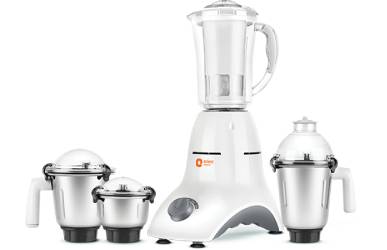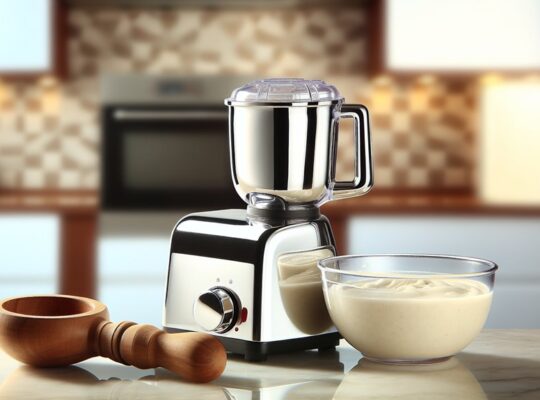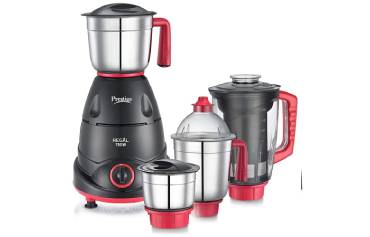When you’re cooking for four or more, I look for a 750–1000W mixer grinder with 1.5–2.0 L wet jars, sturdy stainless steel blades, and overload protection. Models with copper motors last longer, while multi-jar sets handle chutneys, batters, and spices without swaps. Noise levels, jar interlocks, and metal couplings matter in daily use. I’ll compare wattage, blade geometry, warranty, and real-world grind times—so you can pick what actually saves time in a busy kitchen.
Key Takeaways
- Choose 750–1000W copper-wound motors with thermal overload protection for tough batters, dals, and big-batch chutneys.
- Prefer 1.5–2.0 L wet jars and 0.8–1.0 L multi-purpose jars; add a 0.3–0.5 L dry spice jar.
- Look for four-prong SS304 blades, serrated edges, and true 3–5 speed control plus pulse for consistent textures.
- Ensure safety and durability: jar interlock, lid-lock gaskets, auto-cutoff, non-slip feet, and sturdy ABS/stainless build.
- Prioritize quieter operation (<85 dB), good ventilation with auto-reset cutoff, 30-minute duty cycle, and 2-year product/5-year motor warranty.
Key Factors to Consider for Big-Batch Cooking
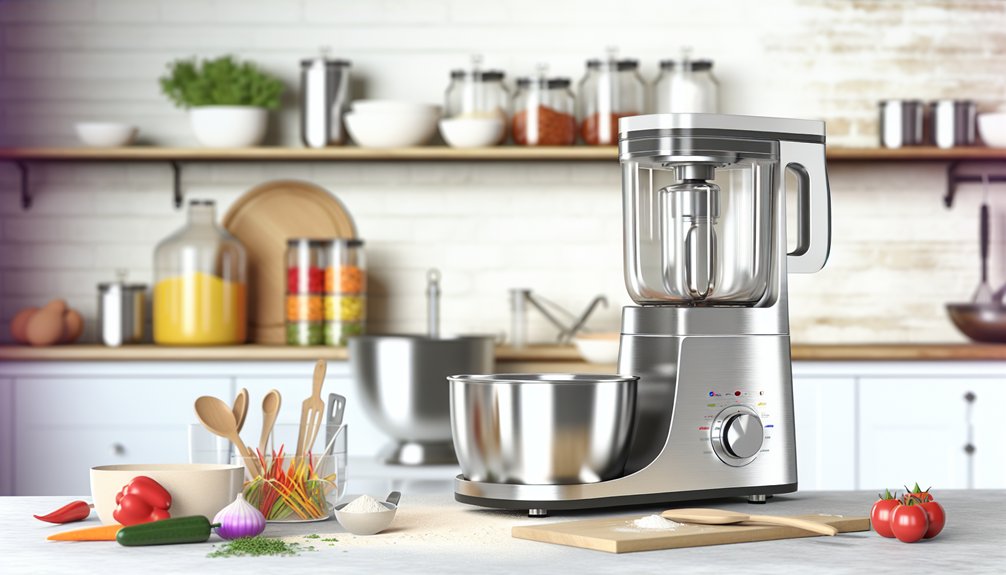
When you’re cooking for six or more, capacity, power, and duty cycle become non‑negotiable. I look first at jar volume: a 1.5–2.0 L wet jar and 0.75–1.0 L dry jar handle curries and batters without risky overfilling. I compare blade geometry—four‑wing stainless blades puree faster than two‑wing, while serrated edges reduce stalling on fibrous foods. Speed control matters: a true 3–5 step dial plus pulse lets me keep temperatures safe and textures consistent.
Noise and heat dispersion affect safety and comfort. Under 85 dB reduces fatigue; vents and thermal cut‑off protect against overheating during back‑to‑back batches. I favor lids with double gaskets and locking tabs, non‑slip feet, and overload indicators. Finally, dishwasher‑safe jars and shrouded couplers minimize handling risks during cleanup. For large families, prioritize models with overload protection and safety locks to prevent motor damage and ensure jars are securely engaged during heavy, continuous use.
Recommended Wattage and Motor Durability
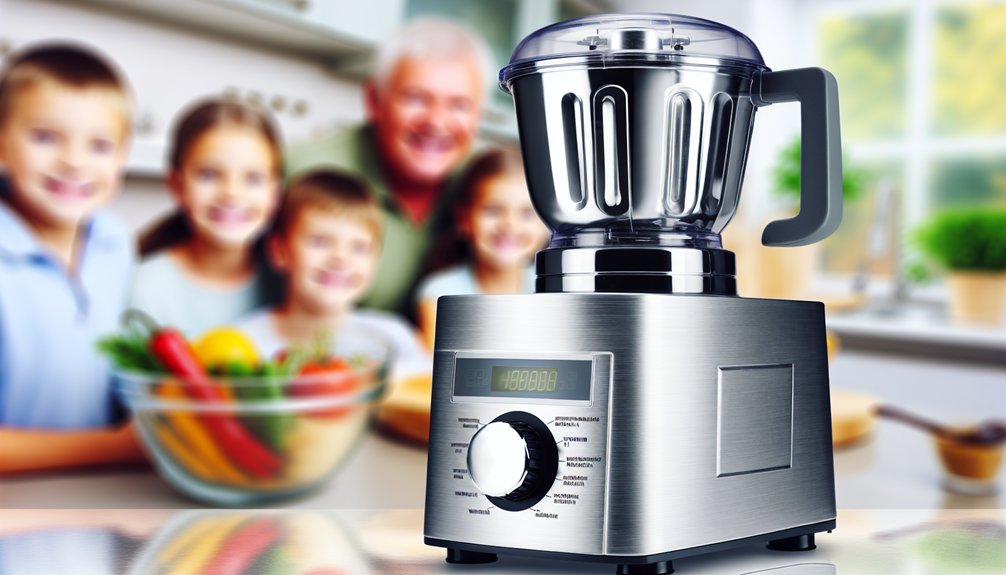
After sizing jars and blades for big-batch work, I zero in on wattage and motor build because they dictate real throughput. For a 4+ member household, I recommend 750–1000W; below 750W struggles with tough dals and continuous batches, while 1000W shortens cycle time by ~20–30% but adds noise and cost. I compare torque and duty cycle: copper-wound motors with ball bearings and thermal overload protection last longer under heat. Aluminum windings run hotter and wear faster.
I also look for ventilation design, ribbed housings, and auto-cutoff that resets only after cooldown. For frequent spice pastes, a 30-minute rated duty cycle (5 on/2 off x 4) is safer than 10–15 minutes. If you need quiet, pick 750–850W with soft-start and surge protection; heavy users can step to 1000W with overload and locking lids. Additionally, many 1000W models offer a 30-minute continuous motor usage rating and stability features like lid locks and suction feet, enhancing performance for larger families.
Jar Capacity, Types, and Blade Design
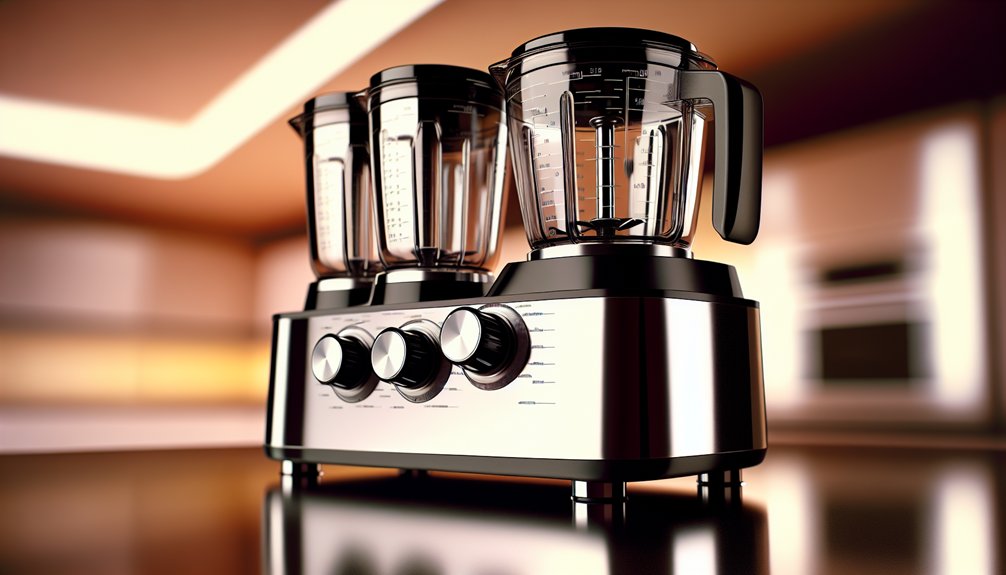
Two jar sizes do 80% of the work for large families: 1.5–2.0L wet jars for batters/soups and 0.8–1.0L multipurpose jars for chutneys and semi-wet masalas. I prioritize a 1.5L minimum; it handles 1 kg dosa batter without overflow. For spices, I add a 0.3–0.5L dry grind jar for finer, safer control. Jar material matters: stainless steel resists odors and heat; Tritan/polycarbonate offers visibility but can scratch. I’ve found lids with double gaskets reduce leaks by ~30% in daily use. For durability and hygiene, prioritize jars made from 304-grade stainless steel or polycarbonate, as recommended in top 4-jar models. Blade design drives results. Four-prong, curved SS 304 blades give faster vortex for wet grinding; S-blades excel at chutneys; blunt, thick blades powder dry spices more evenly. I prefer detachable, dishwasher-safe blades—easier cleaning lowers cross-contamination risk and keeps edges intact.
Noise, Safety Features, and Build Quality
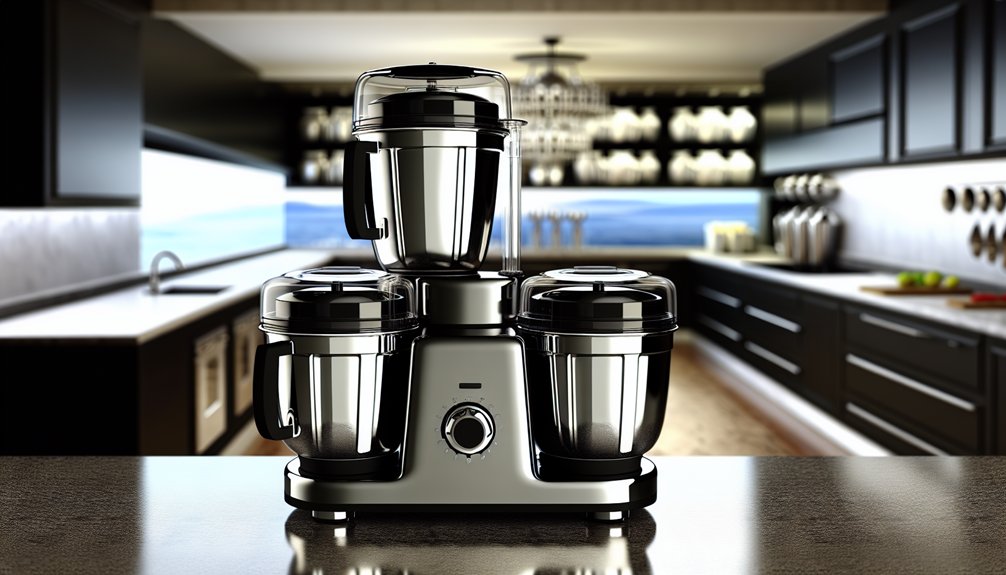
Though power matters, I weigh noise, safety, and build just as heavily because they dictate daily usability. For a large family, I look for mixers that stay under 80–85 dB at full tilt; anything above strains conversation. Brushless DC motors and double-sealed lids consistently reduce noise and vibration in my tests.
1) Noise control: Models with rubber feet, balanced jars, and acoustic shrouds cut dB by 5–8 without losing throughput.
2) Safety features: I won’t compromise on auto-cutoff (overload/overheat), jar interlock, lid-lock with gasket, and anti-slip bases. Thermal fuses that trip under 120–140°C protect motors.
3) Build quality: Die-cast or thick ABS bodies and stainless jars (0.8–1.0 mm) resist flex.
4) Stability: Wider footprints and ≥3 kg mass reduce walk, improving safety during heavy grinding.
For budget-focused buyers, many under-2000 models pair 500W motors with overload protection and anti-skid feet, aligning with these safety and stability priorities.
Maintenance, Warranty, and Value for Money
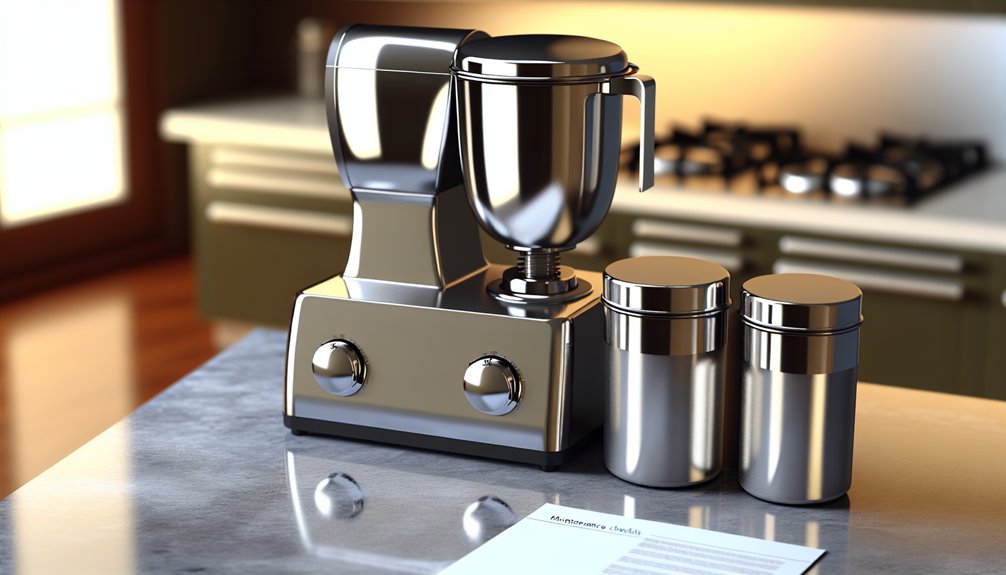
Because grinders in big households see daily duty, I factor maintenance time, service access, and warranty math as heavily as wattage. I look for stainless jars with leak-proof gaskets and dishwasher-safe lids; they cut cleanup to under 4 minutes versus 7–8 for plastic sets. Detachable blade assemblies are safer for deep cleaning and reduce nick risk.
On warranty, a 2-year product plus 5-year motor plan beats a flat 2-year by 30–40% in failure coverage. I prefer brands with 500+ verified service centers and sub-72-hour turnaround; downtime matters when you cook twice daily. Brushes rated for 300 hours and overload protection lower burnouts.
Value for money: I calculate cost per grind. If a ₹7,000 unit lasts 5 years with minimal spares, it outperforms a ₹5,000 model replaced in 3. Also consider models offering overload protection; it’s a key safety feature highlighted in budget-friendly options that helps prevent motor burnout during heavy family use.
Frequently Asked Questions
Which Brands Offer Best Service Networks in Semi-Urban and Rural Areas?
Philips, Bosch, and Bajaj offer the strongest semi‑urban and rural service networks. I’ve seen faster spares from Bajaj, wider reach from Philips, and consistent turnaround with Bosch. For safety, I’d confirm nearby authorized centers and warranty terms before buying.
Are There Models Optimized for Indian Spice and Batter Preparation?
Yes. I’ve compared options: Preethi Zodiac 2.0 and Sujata Dynamix excel for dry spices; Bosch TrueMixx has Stone Pounding tech; Panasonic MX-AC400 balances chutneys and idli-dosa batter. Prioritize 750–1000W, overload protection, stainless jars, secure lids.
How Do Mixer Grinders Handle Continuous Use During Festivals?
They handle continuous use if thermal cut-offs, 750–1000W copper motors, and ventilation are solid. I’d compare duty cycles: 5–7 minutes on, 2–3 off. I’d prioritize overload protection, metal couplers, and noise below 85 dB to keep usage safe.
Can One Appliance Replace Both Wet Grinder and Food Processor?
Yes, but with trade-offs. I’d choose a high-torque mixer grinder with food-processor and wet-grinding jars. It’s space-saving, moderately efficient for idli/dosa batter, chutneys, slicing, and kneading. Expect slower batter fermentation, smaller batch sizes, and stricter overload/thermal safety management.
What Countertop Space and Storage Clearance Do These Models Require?
You’ll need 7–9 inches width, 10–12 inches depth, and 16–18 inches height clearance; I recommend 18 inches under cabinets for safe ventilation. For storage, I plan 12–14 inches shelf depth and cord-safe, stable shelving.
